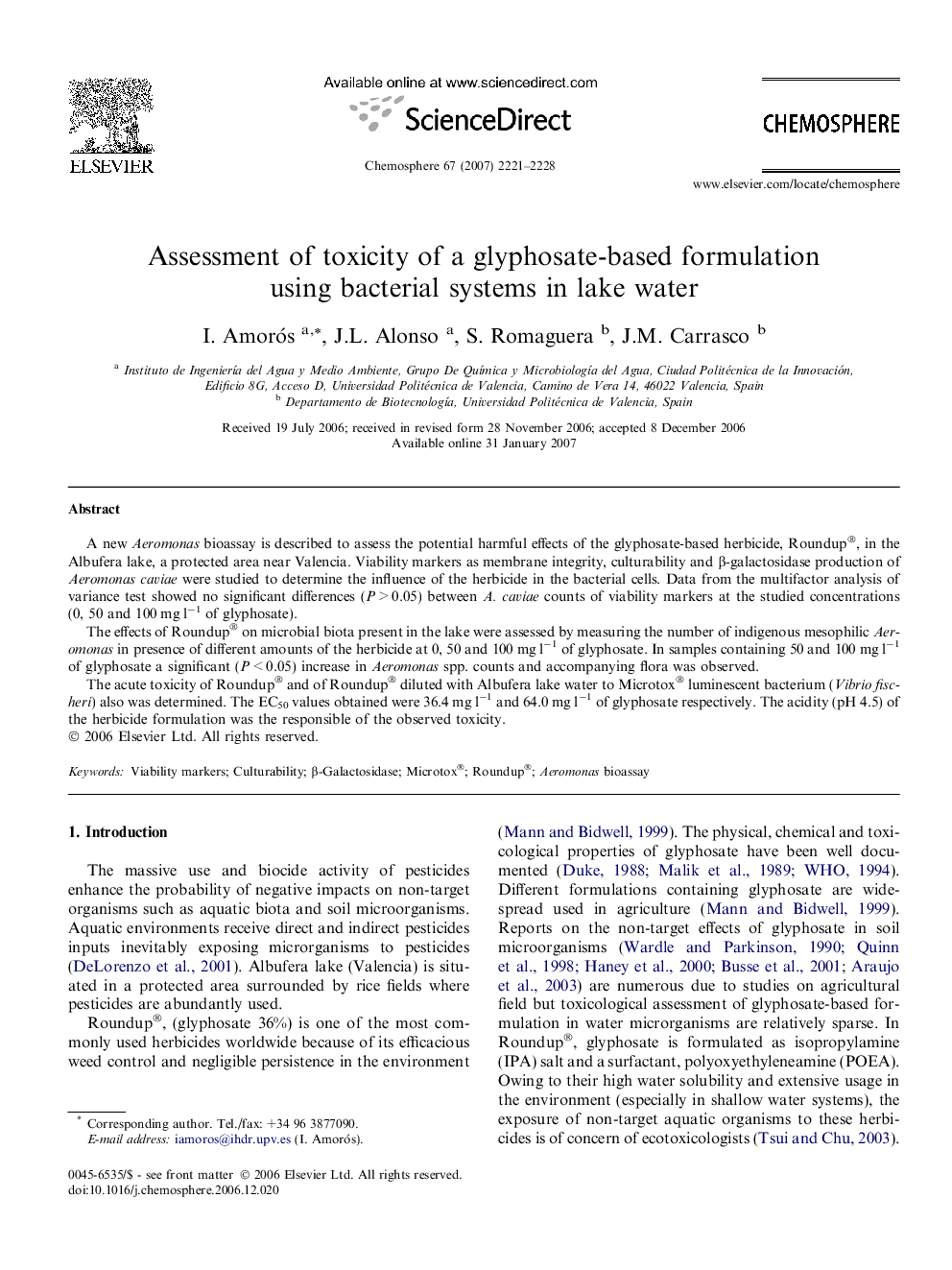| Article ID | Journal | Published Year | Pages | File Type |
|---|---|---|---|---|
| 4415271 | Chemosphere | 2007 | 8 Pages |
A new Aeromonas bioassay is described to assess the potential harmful effects of the glyphosate-based herbicide, Roundup®, in the Albufera lake, a protected area near Valencia. Viability markers as membrane integrity, culturability and β-galactosidase production of Aeromonas caviae were studied to determine the influence of the herbicide in the bacterial cells. Data from the multifactor analysis of variance test showed no significant differences (P > 0.05) between A. caviae counts of viability markers at the studied concentrations (0, 50 and 100 mg l−1 of glyphosate).The effects of Roundup® on microbial biota present in the lake were assessed by measuring the number of indigenous mesophilic Aeromonas in presence of different amounts of the herbicide at 0, 50 and 100 mg l−1 of glyphosate. In samples containing 50 and 100 mg l−1 of glyphosate a significant (P < 0.05) increase in Aeromonas spp. counts and accompanying flora was observed.The acute toxicity of Roundup® and of Roundup® diluted with Albufera lake water to Microtox® luminescent bacterium (Vibrio fischeri) also was determined. The EC50 values obtained were 36.4 mg l−1 and 64.0 mg l−1 of glyphosate respectively. The acidity (pH 4.5) of the herbicide formulation was the responsible of the observed toxicity.
